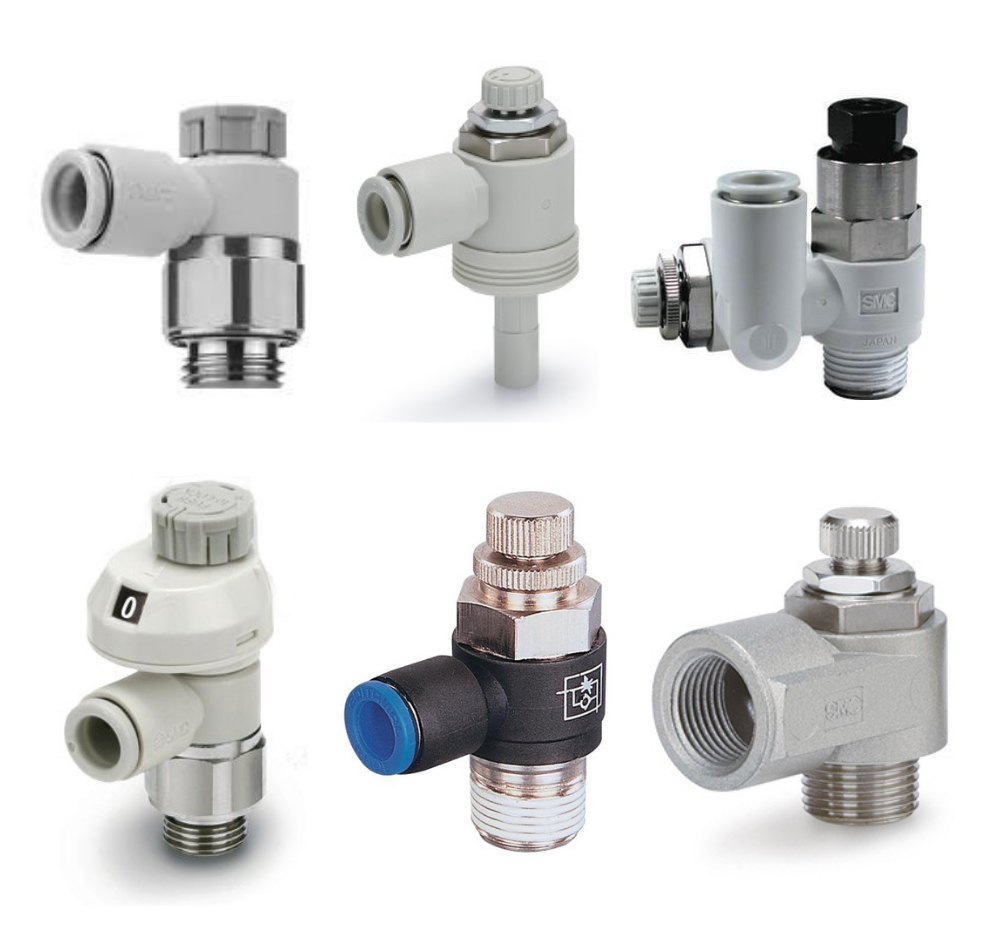Speed Controllers
Small valves called speed controllers (also known as flow controls) are used to regulate the flow rate from a pneumatic actuator. In contrast to a needle valve, which controls airflow in both directions, speed controllers reduce the operational speed of a pneumatic actuator in one direction (in and out of the actuator). A speed controller has the advantage of allowing the cylinder to move in a regulated manner in one direction while allowing full flow and speed in the opposing direction.
An integrated pilot check valve is included in the speed controller. This combination allows for cylinder speed control as well as temporary intermediate stops.
A threaded stem/knob adjustment on the speed controller enables progressive and easy modification of the amount of air that may travel through the valve. An indicator is added to the speed controllers. The benefits of adding the indicators are:
- Allow your systems to be more tightly controlled. Any changes to the cylinder flow, for example, would be visible, allowing for faster issue diagnosis.
- Reduce the force of the stroke.
- Allows operators to adjust supply and exhaust without having to worry about unexpected piston extension or pressure fluctuations.
- Reduce pneumatic cylinder wear and tear for longer lifespans and lower operating expenses.
Two types of speed controls are used in pneumatic installations:
Meter out valve – This valve regulates the amount of exhaust air discharged by the actuator. Due to the inherent compressibility of air, the valves are often employed for double-acting cylinders and help control the speed of the actuator.
Meter in valve – The valves are typically used to regulate the speed of a cylinder with only one source of pressure. For example, if an actuator extends or retracts automatically using a spring. Reverse flow control valves are another name for these valves.


